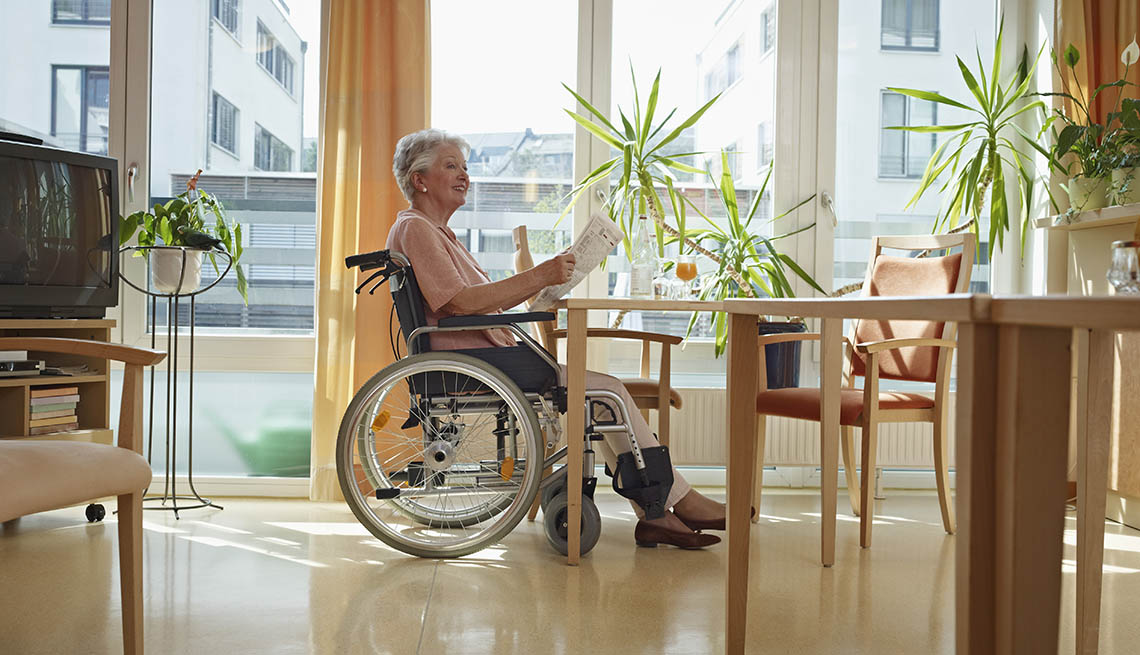Is Your Forever Home Ready for the Future?
Good design is the key to lifelong comfort and safety
Whether older adults live in a city or a rural area, in a modern apartment or a century-old farmhouse, they share something in common. They want to remain in their homes and communities for the long term. A new AARP survey1 revealed that nearly four out of five Americans 50 and older prefer to age in place.
A well-designed home is the key to living comfortably, safely, and independently for years to come in the place you love. That makes today the right time to begin making home improvements, whether in your own home or your parents’ home.
Here are three elements of good home design that will stand the test of time.
Convenience
An age-friendly home allows you to do everyday tasks without extra fuss or steps, even if your mobility and abilities change. This means having a wall oven that lets you prepare a roast chicken or your prized sourdough bread without having to bend and stoop, or a walk-in shower that eliminates the need to climb in and out of a tub. With motion-sensor or voice-activated smart lighting, you won’t have to fumble for light switches that might be hard to reach or manage with stiff hands.
Six "Livable Home" Solutions
Adaptability
Evaluate your space, or your parents’ space, with an eye toward future you, or future mom and dad. Are the doorways wide enough to accommodate a wheelchair? Are there handrails along the stairs? If stairs become difficult to navigate, can a downstairs den be converted into a bedroom for one-story living? Would installing an electric stair lift be a better option? A no-step entryway to a home is ideal. A ramp leading up to the front door is a good alternative, if that’s not possible. Is the bed easy to get in and out of? If not, a bed rail is an inexpensive fix.
Simplicity
Minimalism rules when it comes to making a home safe and as accident-proof as possible. Get rid of the clutter that’s accumulated over the years, including stacks of books or newspapers on the floors. Throw rugs are tripping hazards – donate or give these to friends.
Take stock of your furniture with the goal of reducing the number of pieces throughout your home. Streamline seating arrangements, leaving lots of space around chairs, sofas, and coffee tables, so pathways are wide and free of potential obstacles. Look for ways to create similar airy layouts in your bedroom and dining room.
A home that’s uncluttered, adaptable, and accommodating is a home that can be enjoyed safely and comfortably today and for many years to come. Smart home technology, well-designed layouts and a range of updates and renovations, prepare a forever home for the future. What’s more, these improvements can be stylish, affordable, and implemented with ease.
Want to get started? Through Lowe’s Livable Home™ services, you’ll have access to resources and professionals who can help from planning to installation. Plus, Lowe’s is collaborating with AARP in a shared commitment to help people make their homes ready for all of life’s changes. Over the next two years, Lowe's is offering AARP-created videos, tips, and resources that demonstrate ways to adapt your home to fit your needs now and in the future.
Click here to get more ideas, tips, and checklists from Lowe’s for creating a livable home for your future
Or, call 1-833-569-3784 for more information.
1 https://www.aarp.org/research/topics/community/info-2021/2021-home-community-preferences.html





